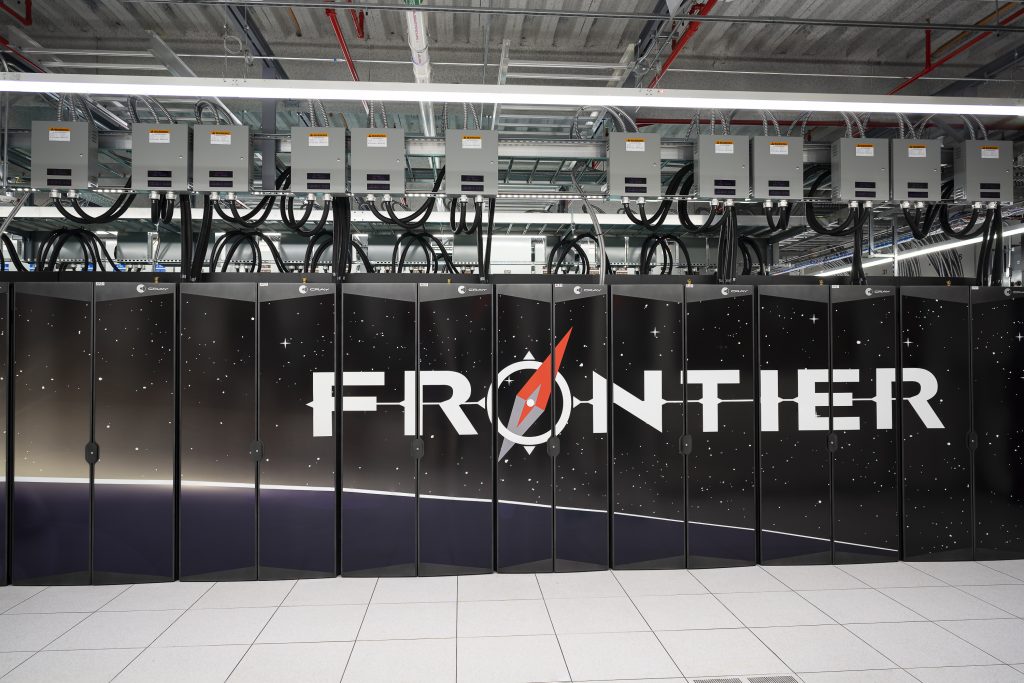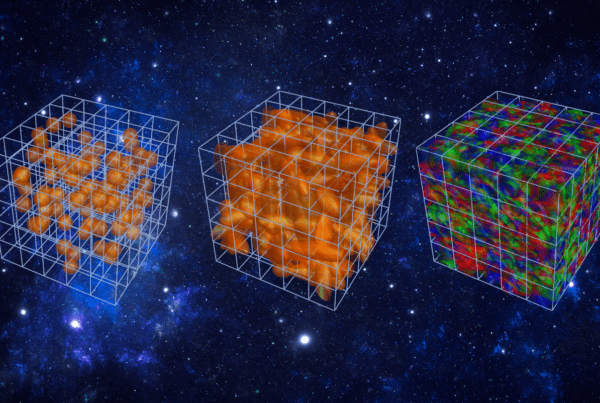Just how fast can the world’s fastest supercomputer go? Maybe even faster than imagined.
Researchers studying plasma physics for particle accelerators recently used the Oak Ridge Leadership Computing Facility’s Frontier supercomputer to achieve a speedup by as much as eightfold in their code’s performance – more than double the improvement expected. The achievement raises scientists’ already high hopes for the world’s first exascale supercomputing system.
“This code has pushed the limits of Frontier and helped us think about what’s beyond and how to get there,” said Sunita Chandrasekaran, the study’s principal investigator and an associate professor of computer and information sciences at the University of Delaware. “We expect there’s still more we can do with the machine, but we don’t quite know yet.”
Frontier debuted in May at No. 1 on the Top500 list of fastest computers with a record-setting 1.1 exaflops, or 1.1 quintillion calculations per second. Engineers expect the HPE Cray EX system at the U.S. Department of Energy’s Oak Ridge National Laboratory could eventually double its speed to as much as 2 exaflops or more after opening to full user operations in 2023.

The Frontier supercomputer remains the world’s only exascale computer and the fastest in the world at 1.1 exaflops.
Credit: ORNL/Carlos Jones
Chandrasekaran and her team, which included researchers from Germany’s Helmholtz-Zentrum Dresden-Rossendorf research laboratory, or HZDR, and its Center for Advanced Systems Understanding, or CASUS, began by running the Plasma in Cell on GPU code on Crusher, a prototype system equivalent to 1.5 cabinets of Frontier. Those runs were granted through the OLCF’s Center for Accelerated Application Readiness, which allows select users early access to help stress-test the system.
“Working at the frontier of computing technologies is what gives us the cutting-edge advantage for our science goal,” said Michael Bussmann, scientific project leader for CASUS. “Vendors, computer scientists and physicists have all worked together to get everything out of the system.”
The team initially estimated the code, used to simulate compact particle-accelerators, would achieve a speedup of quadruple its performance on Summit, Frontier’s predecessor.
“The idea was to get the code to migrate to new hardware and software and to design it to almost auto-update so it could be written once and run many times without having to be rewritten every time the system changed,” Chandrasekaran said. “Everything was raw, from the hardware to the software to the performance tools, so we had to use these raw, unfinished tools to measure performance and try to pinpoint issues to reverse-engineer solutions.”
For a first test, the team ran the code at single precision when scaling to more than 9,200 of Frontier’s nodes and achieved a speedup of nearly five times its original performance on Summit. The team expected to lose speed by switching to double precision, a computing standard that increases the accuracy of results but typically consumes more computational resources.
Instead, the code achieved eight times the speed of its original performance – twice as fast as the team hoped.
“We expected a boost to our science from Frontier, which promises to enable such technological advances as compact particle accelerators to target cancer cells and compact X-ray sources to study matter under extreme conditions,” said Alexander Debus, project leader at HZDR. “We just learned we can do even more than we expected. We already have great ideas, so expect more amazing science soon.”
Support for this research came from the Exascale Computing Project, a collaborative effort of the DOE Office of Science and the National Nuclear Security Administration, and the DOE Office of Science’s Advanced Scientific Computing Research program. The OLCF is a DOE Office of Science user facility.
UT-Battelle LLC manages ORNL for DOE’s Office of Science, the single largest supporter of basic research in the physical sciences in the United States. DOE’s Office of Science is working to address some of the most pressing challenges of our time. For more information, visit https://energy.gov/science





